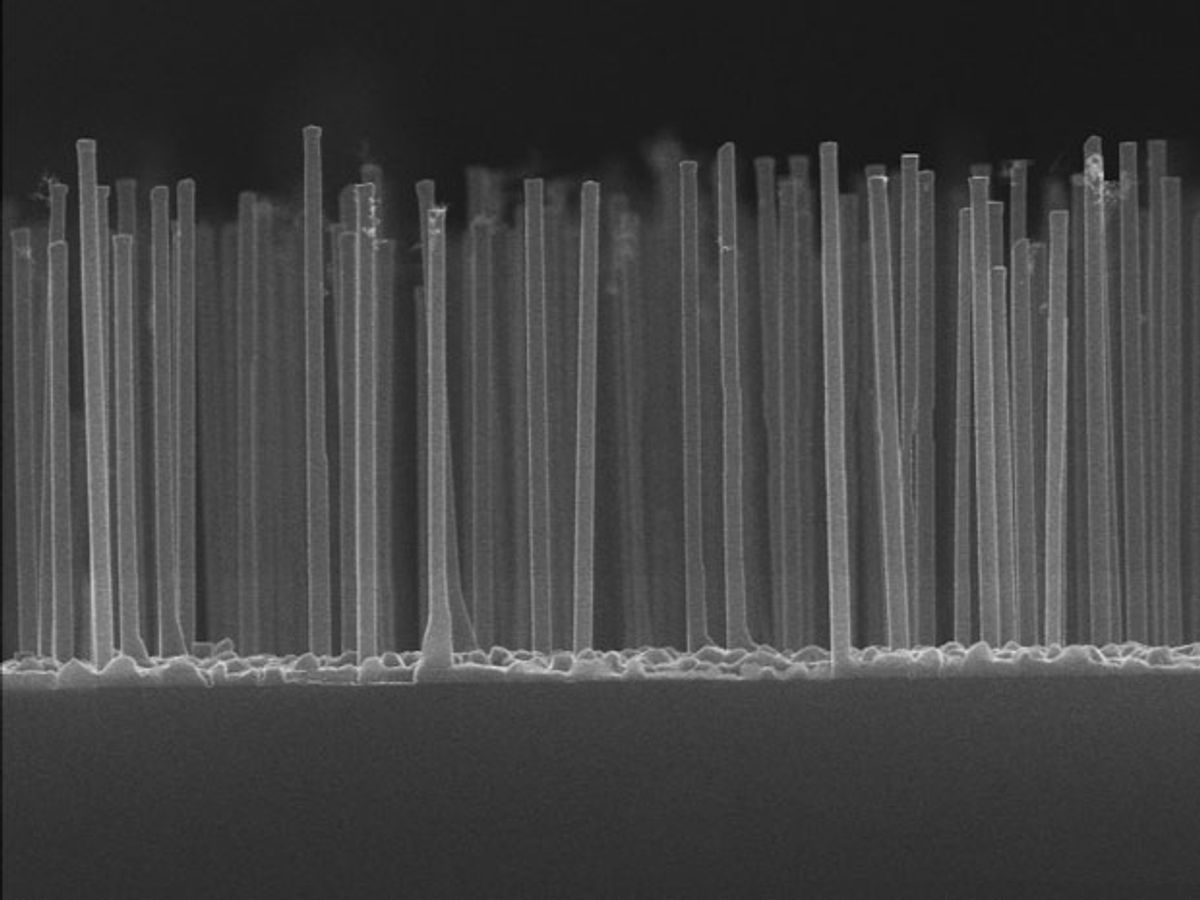The Shockley-Queisser limit has developed into a Holy-Grail quest for conversion efficiency of PVs. As Hans J. Queisser commented on this blog: “Exactly on October 30, 1960, Shockley and I published this paper, which initially nobody quoted. Now, merely 50 years later, twice a week.”
As the term “limit” implies, the theory posited that only 33.7 percent of all the sun’s energy hitting a solar cell could be converted into electricity for solar cells with a single p-n junction.
Achieving, or even surpassing, the Shockley-Queisser limit would overcome one of the commercial problems PVs have faced in competing with fossil fuel energy: higher conversion efficiency. While PVs have seen their costs decrease by a factor of 20 between 1978 and 2008, the efficiencies have not risen quite as dramatically. Commercially available silicon crystal-based PVs are still stuck with conversion efficiencies only in the high teens.
Various nanomaterials have promised both lower costs and higher efficiencies and in some cases the ability to surpass the Shockley-Queisser limit. However, some of these approaches have centered on the somewhat controversial ideas of electron multiplication and hot carrier cells. Electron multiplication involves making multiple electron-hole pairs for each incoming photon while with hot carrier cells the extra energy supplied by a photon that is usually lost as heat is exploited to make in higher-energy electrons which in turn leads to a higher voltage.
While the joint Danish and Swiss research team has not developed a fully functioning solar cell, the novel design they have proposed for a new generation of PVs would bypass these two approaches and instead uses the nanowires to concentrate the sun’s rays into a very small area of the solar cells.
The research, which was published in the journal Nature Photonics ("Single-nanowire solar cells beyond the Shockley–Queisser limit"), exploits nanowires’ unique light absorption capabilities to achieve this light concentrating effect. Because the diameter of the nanowires is smaller than the incoming wavelength of light, resonances occur in the intensity of the light surrounding the nanowires. These resonances concentrate the light where it is converted into electricity.
Peter Krogstrup, one of the researchers on the project, explained to me via e-mail that the team had addressed one of the key obstacles preventing nanowires from reaching commercial applications in PVs: crystal growth. The biggest challenge for nanowires, and indeed all devices based on nanostructured crystals, is achieving perfect doping levels.
Krogstrup told me that future research will be aimed at optimizing the crystal growth, so the nanowires get a higher internal efficiency. In the meantime, the mere prospect of pushing the boundaries for the Shockley-Queisser limit could itself be a significant contribution to PV development.
“It's exciting as a researcher to move the theoretical limits, as we know,” says Krogrstrup in a press release. “Although it does not sound like much, that the limit is moved by only a few percent, it will have a major impact on the development of solar cells, exploitation of nanowire solar rays and perhaps the extraction of energy at international level.”
Images: Niels Bohr Institute
Dexter Johnson is a contributing editor at IEEE Spectrum, with a focus on nanotechnology.




